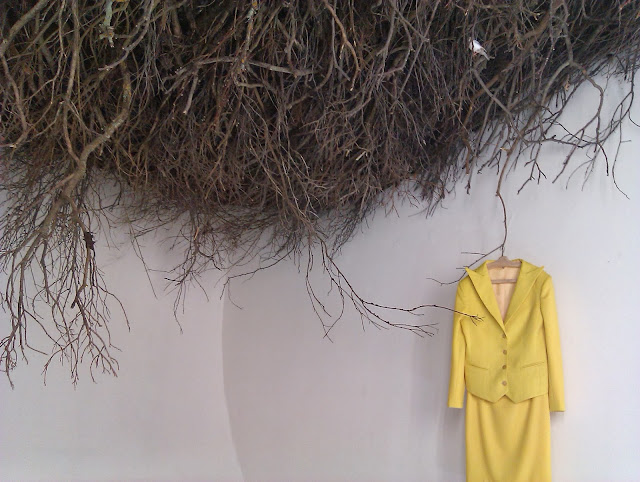Dispatch from Venice: Kosovo's inaugural year
Originally published at in Apollo Muse 31 May 2013.
“The birds built it for us,” says artist Petrit Halihaj,
pointing to a giant nest that has taken up most of the space at the
Kosovo Pavilion - the first ever at the Venice Biennial since the country's independence in 2008- which opens to the
public tomorrow. The small room nestled between Turkey and Chile in the
Arsenale, smells of fresh soil, which holds together the branches brought from
Kosovo for the installation.
“What drew me to Petrit’s work,” curator Kathrin Rhomberg
tells me, “is that it is one the one hand lyrical and personal, but it also
appeals to collective emotions. His work can be understood by everyone.” The artist
and curator had collaborated before, two years ago at the Berlin Biennial.
Participating in the Venice Art Biennial for the first time
is an important step for Kosovo. The country made its debut at the Venicce
Architecture Biennial last year. “It is a young country which some EU nations
do not recognise, so taking part in an event
like the Biennial is symbolic” says Rhomberg “art and culture can play a
really crucial role in estabilishing an identity for a nation.” The Minister of
Culture, Youth and Sports, Memli Krasniqi, sees this as an opportunity to
spotlight Kosovo’s “rich and dynamic contemporary art scene, which has been
absent from the most important event there is, the Venice Biennale”.
How much is the work in the Pavilion about Kosovo? And how
much does it have to be? The commissioner Erzen Shkololli, National Gallery of Kosovo, and Mr. Krasniqi
insist that the work is deeply connected to the country - but it appears to be a piece that can be
enjoyed without knowledge of Kosovo and its history.
As director the National Gallery, Mr. Shkololli has
showcased young contemporary artists such as the photographer Alban Muja, as
well as older generations of more established painters like Engjell Berisha.
His vision for the pavilion can be seen in his choice of an early career artist
and a foreign curator. Rhomberg describes this as a progressive step, which,
rather than looking at Kosovo’s cultural past, gives a “perspective on the
future of the arts in the country”.
The Kosovo Pavilion at the 55th Venice Biennale
opens June 1st -24th November 2013



Comments